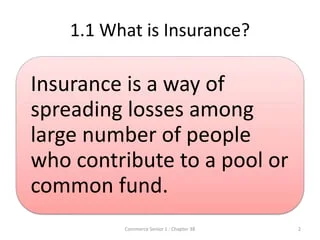Pacific Prime - The Facts
Pacific Prime - The Facts
Blog Article
Some Known Facts About Pacific Prime.
Table of ContentsFascination About Pacific PrimeThe Main Principles Of Pacific Prime The Main Principles Of Pacific Prime The Main Principles Of Pacific Prime The smart Trick of Pacific Prime That Nobody is Talking About

This is due to the fact that the data were accumulated for a period of solid economic efficiency. Of the approximated 42 million people who were without insurance, just about about 420,000 (regarding 1 percent) were under 65 years old, the age at which most Americans end up being qualified for Medicare; 32 million were adults between ages 18 and 65, about 19 percent of all grownups in this age team; and 10 million were children under 18 years of age, concerning 13.9 percent of all kids (Mills, 2000).
These price quotes of the variety of persons without insurance are generated from the annual March Supplement to the Present Populace Study (CPS), carried out by the Demographics Bureau. Unless otherwise noted, national quotes of individuals without medical insurance and percentages of the population with different sort of insurance coverage are based on the CPS, one of the most extensively utilized resource of price quotes of insurance coverage and uninsurance prices.
Pacific Prime for Beginners

Still, the CPS is specifically helpful since it produces yearly price quotes reasonably quickly, reporting the previous year's insurance policy protection estimates each September, and because it is the basis for a consistent set of price quotes for even more than twenty years, enabling for evaluation of trends in coverage over time. For these factors, as well as the extensive use the CPS in various other studies of insurance protection that exist in this report, we count on CPS quotes, with limitations kept in mind.

The quote of the number of without insurance people broadens when a populace's insurance coverage standing is tracked for a number of years. Over a three-year duration starting early in 1993, 72 million individuals, 29 percent of the united state population, lacked protection for at the very least one month. Within a solitary year (1994 ), 53 million individuals experienced at least a month without coverage (Bennefield, 1998a)
6 out of every ten uninsured grownups are themselves utilized. Working does boost the possibility that one and one's household members will certainly have insurance coverage, it is not a warranty. Even members of families with 2 full time breadwinner have nearly a one-in-ten chance of being without insurance (9.1 percent uninsured price) (Hoffman and Pohl, 2000).
All about Pacific Prime
New immigrants make up a substantial proportion of people without medical insurance. One evaluation has actually attributed a significant part of the current development in the dimension of the U.S. uninsured populace to immigrants that got here in the nation in between 1994 and 1998 (Camarota and Edwards, 2000). Recent immigrants (those who pertained to the USA within the previous four years) do have a high price of being without insurance (46 percent), yet they and their children represent simply 6 percent of those without insurance across the country (Holahan et al., 2001).
The relationship between medical insurance and accessibility to care is well developed, as documented later in this chapter. Although the relationship between medical insurance and health this link and wellness results is neither direct neither easy, a substantial clinical and health and wellness solutions research study literature links medical insurance protection to better accessibility to care, much better high quality, and boosted individual and population health and wellness status.
Levels of evaluation for examining the effects of uninsurance. This discussion of medical insurance protection focuses largely on the U.S. population under age 65 because practically all Americans 65 and older have Medicare or other public protection. Additionally, it focuses particularly on those with no medical insurance for any type of length of time.
5 Easy Facts About Pacific Prime Described
The issues encountered by the underinsured are in some respects comparable to those dealt with by the uninsured, although they are usually much less serious. Health insurance, nonetheless, is neither needed neither enough to get access to clinical services. The independent and direct result of health and wellness insurance protection on access to wellness services is well established.
Others will certainly obtain the healthcare they require even without medical insurance, by paying for it expense or seeking it from companies who use care cost-free or at extremely subsidized prices. For still others, health and wellness insurance alone does not make certain receipt of treatment because of various other nonfinancial obstacles, such as a lack of healthcare carriers in their neighborhood, minimal access to transportation, illiteracy, or etymological and cultural differences.
Pacific Prime Can Be Fun For Everyone
Official study about uninsured populaces in the United States dates to the late 1920s and very early 1930s when the Board on the Cost of Treatment created a series of records about funding medical professional workplace sees and hospitalizations. This concern ended up being salient as the numbers of clinically indigent climbed up throughout the Great Depression.
Report this page